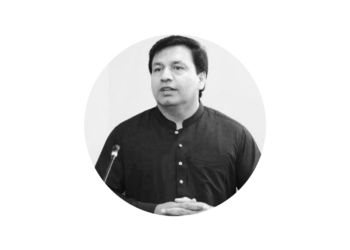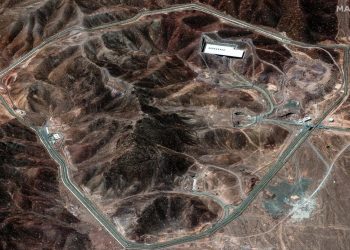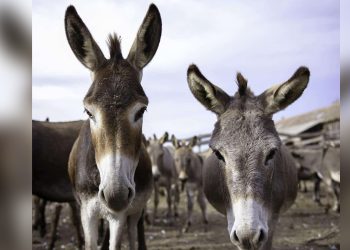An industrial policy (IP) or industrial strategy of a country is its official strategic effort to encourage the development and growth of all or part of the economy, often focused on all or part of the manufacturing sector. The industrial policy seeks to provide a framework of rules, regulations and reservation of spheres of activity for public and private sectors.
In the past policymakers in Pakistan were inclined to keep two objectives in view while designing public policy aimed at industrializing the country. The first was to gain self-sufficiency in items of basic consumption; the second, was to exploit the country’s perceived comparative advantage.
In both cases industrial policy overlapped considerably with trade policy; at times it was concern with some aspects of international trade that determined the content and orientation of industrial policy. To take one example: The Indo-Pakistan trade war of 1949 forced Pakistan into adopting the first approach – to attempt for self-sufficiency in basic manufactures. With the New Industrial Policy’ 1991, the Indian Government intended to integrate the country’s economy with the world economy, improving the efficiency and productivity of public sector.
The making of industrial policy in Pakistan has a chequered history. Industrial policies were made as either part of the medium-term development plans or in response to some crisis or other the country was faced with. Five industrial policies or distinct approaches have left a lasting impression on the structure of industry in the country.
The first was made in 1948, soon after Pakistan gained independence, and was developed further as a consequence of the Indian decision in 1949 to place a trade embargo on Pakistan. The second was embedded in 1960-65 and the Third in 1965-70. The fourth was formulated by the several democratic governments that held office in the eleven-year interregnum, 1988-1999, between two long rules by the military, and the fifth was adopted by the government of President Pervez Musharraf, the fourth military ruler.
When, in 1949, Pakistan chose not to follow other countries of what was then called the Sterling Area (now the Commonwealth) is devaluing its currency with respect to the American dollar, India retaliated by launching a trade war against its neighbor. Pakistan is deindustrializing prematurely.
The role of manufacturing in the economy has declined and its rate of growth lags far behind India, Bangladesh and Sri Lanka. As a result, over the last decade and a half, Pakistan has lost share of world exports, whilst Bangladesh’s share doubled and Vietnam’s grew seven-fold in the same time period. Manufactured goods represent a lower percentage of Pakistan’s exports than those of Bangladesh.
Industrialization is strongly connected with formation of human capital, which is a key driver of innovation alongside labor-absorbing enterprises. Faced by a near-existential threat, economies all over the world are at the pinnacle of a red alert.
The novel coronavirus continues to hobble and confound the two main pillars of the global economy: demand and supply across industries and continents. Apart from China, the most affected countries reporting the highest death rates include the United States, United Kingdom, Italy, Spain, France and Germany.
These countries not only contribute a large proportion to global output and trade (around 40%) but also have a significant share of manufacturing value addition coming from them. At the time of independence, Pakistan has inherited only 34 industrial units out of 921 industrial units in subcontinent. They were cotton textile, cigarettes, sugar, rice husking, cotton ginning and flour milling industries; and together they contributed only 7% of GDP and employed a little over 26,000 employees.
Pakistan needs a fresh industrial policy to promote employment, value-added exports and import substitution. The five-year targets of the industrial policy should be: To take the % contribution of manufacturing to GDP up to 25% from the current 13.5%; Manufactured goods to represent over 85% of exports from the current 77%, thus adding value to commodities; Annual rate of growth of manufacturing to be 10%+ against the recent 5-6%.
Investment to represent 30% of GDP from the current 16%; Pakistan’s share of world exports to grow from 0.13% to 0.25% i.e. to US $40 Bn; Export of goods and services to amount to 12.5% of GDP from the current 8.2%; Import content in exports to double as a result of cascading import tariffs.
To create a level playing field for the formal manufacturing sector and to give it space to consolidate financially and develop scale, it is vital that: the tax base is broadened by the inclusion of retail, wholesale and agricultural sectors, which together represent 40% of formal economy but contribute less than 2% to taxes leakage of wealth into the real estate sector and overseas is stemmed the government resolves to make this the last time that Pakistan has to go to the IMF (or friendly nations) for help. Structural reforms need to be undertaken diligently and implemented rigorously.
The main policies that need alignment to support industry are: trade, fiscal, energy, agriculture, labor and the capital markets. Additionally, the fragmentation between the federation and the provinces and interprovincial conflicts need to be resolved. The foremost need of any policy framework is to provide long-term consistency to investors.
The government should consider a legally binding way of providing continuity to industry. Amongst all the policies needing alignment, the most crucial is between the trade and taxation policies to promote industrialization.
Cascading import duty on raw materials not available locally, low duty on intermediate items not made domestically and higher duty on finished goods would allow Pakistan to maximize its position in the global value chain. The National Tariff Commission should remain functional and effective, which has not always been the case.
Trade agreements need to ensure preferential access to partner countries of value-added items, not just of commodities or intermediate inputs. Fiscal policy should be based on equitable distribution of taxation burden through a broader tax base. Fiscal policy making should be separated from tax collection.
Energy should be provided to industry at a cost that allows it to be competitive globally. Fragmentation between the federal and provincial authorities and inter-provincial conflicts need to be resolved speedily to make it easier to do business. The foreign direct investment policy should focus on import substitution, exports, technology, capital and risk-intensive sectors rather than on short payback.
Capital markets for both equity and debt need to be developed to support investment in industry. Corporatization should be promoted to improve the standards of governance and accountability. The housing industry will benefit from the removal of opaqueness in property titles, weak foreclosure laws and absence of long term mortgages.
Recently, the State Bank of Pakistan (SBP) in its annual report for fiscal year 2018-19 recommended to the government “to put in place a coherent industrial policy on an immediate priority basis.” Similarly, the Pakistan Business Council asked for “a fresh industrial policy to promote employment, value-added exports and import substitution”. In fact, there have been many op-eds urging the government to implement a new industrial policy.
Heeding these demands, the government seems to have decided to introduce a 10-year industrial policy. It has tasked the Ministry of Industries and the Ministry of Commerce to come up with a new draft.
Despite serious financial difficulties and commitment to the International Monetary Fund (IMF) against subsidies, this year the government has approved a gas subsidy for these sectors to the tune of Rs25 billion. These policies have been disastrous for the country’s industrial development. The protection given to some sectors made them inefficient and rendered them incapable of competing in the global market.



























